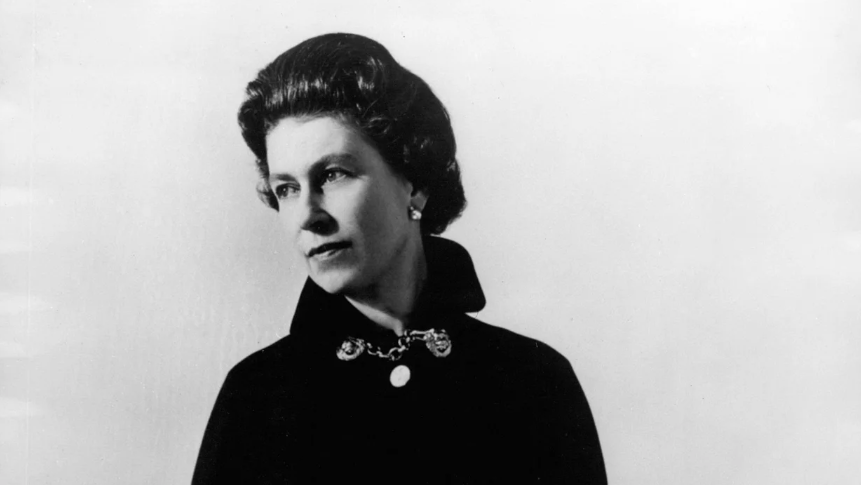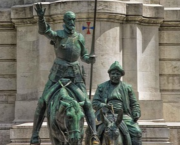
More Than An Icon: How Elizabeth II Carved A Permanent Place In Posterity
 5 min
5 min
More Than An Icon: How Elizabeth II Carved A Permanent Place In Posterity
High on the list of words young people overuse — to the point of gutting its true meaning — is “iconic.” It’s not just second-rate actors and reality TV stars, but apparently your high school pal qualifies for iconic status just by showing up to a party in a cool new jacket.
Gen Z’ers are no doubt joining with their grandparents (and great-grandparents?) in paying their respects to the bonafide international icon that was Queen Elizabeth II.
Yet amid all the hagiography and highlight reels of the past two days since Elizabeth’s death at 96, another word comes to mind: monumental. With its solidity and permanence, the term is effectively one clear step up from iconic: both larger than life, and real in a way the make-believe of Hollywood or Instagram can never be.
The longest-serving British monarch ever built that status through thick and thin, feather-plumed hats and stiff upper lips: At a mere 5ft 3 inches (1.63m) of keeping-calm-and-carrying-on, she was a modern monument.
And yet the Queen’s passing, and the simultaneous outpouring of esteem from around the world, comes at a time when monuments are not particularly appreciated. In Eastern Europe, former Soviet monuments are being toppled in an effort to condemn the past and defend the future in the face of a newly aggressive Kremlin. As the Black Lives Matter movement spread around the U.S. and then the world two years ago, one key demand was the removal of statues of historical figures with racist, sexist and other malign marks on their marbled images.
There are of course many monuments that should rightfully be taken down. Yet the eagerness to so quickly eliminate physical representations of the past dovetails with the non-stop virtual takedowns of our digital age: Nobody is safe, nothing is sacred, nothing is permanent.
Until Thursday, the Queen defied all of that, seemingly destined to remain a part of our lives forever. Having ruled over seven decades, she possessed a singular formula for maintaining public favor and relevance across tumult in her nation and defunct empire, not to mention her own family. Part of it was quite plainly on the surface: the expertly executed waves to the crowd with her handbag looped just above her wrist, a perched posture of serenity in a velvet sitting room, standing for photo ops face-to-face with world leaders.
Her greatest feat, perhaps, is having managed to claim outsized stakes in both political and cultural significance — even if she exercised no real political power and the institution she represented was everything modern culture wasn’t supposed to be.
Elizabeth was in her role, yet somehow recognizable, eternally decent if always a tad distant. If you squint hard enough, you might see in her the model for a firm but patient CEO or prime minister, a firm but patient mother and matriarch.
Her ability to somehow defy categories and evade nearly all criticism can be seen in the reaction Thursday to the news from Sandrine Rousseau, a leftist French politician: “Elizabeth II left her mark on our age. She was a female figure who was part of the most momentous events of the second half of the 20th century until today. I’m not a monarchist, but I respect talent and those with political instincts. She had plenty.”
The end of Elizabeth’s reign brought me back to a chilly afternoon a few years ago when I’d brought my Gen Z kids and nieces to Madame Tussauds Wax Museum In London. There were lines to step up to take selfies alongside the wax likenesses of a wide range of celebrities and, yes, iconic figures, past and present. Still, we all agreed that the Queen had stolen the show.
The world is just getting used to the real Elizabeth being gone. Her likeness will soon start popping up in marble, and carved in stone, in England and beyond. It’s hard to imagine how she could ever be torn down.
— Jeff Israely
(Photo: Keystone Press Agency/ZUMA)









 English
English
 Français
Français
 Deutsch
Deutsch
 Italiano
Italiano
 Español
Español



 Colaborar
Colaborar



















 Puedes apoyar a tus escritores favoritos
Puedes apoyar a tus escritores favoritos





